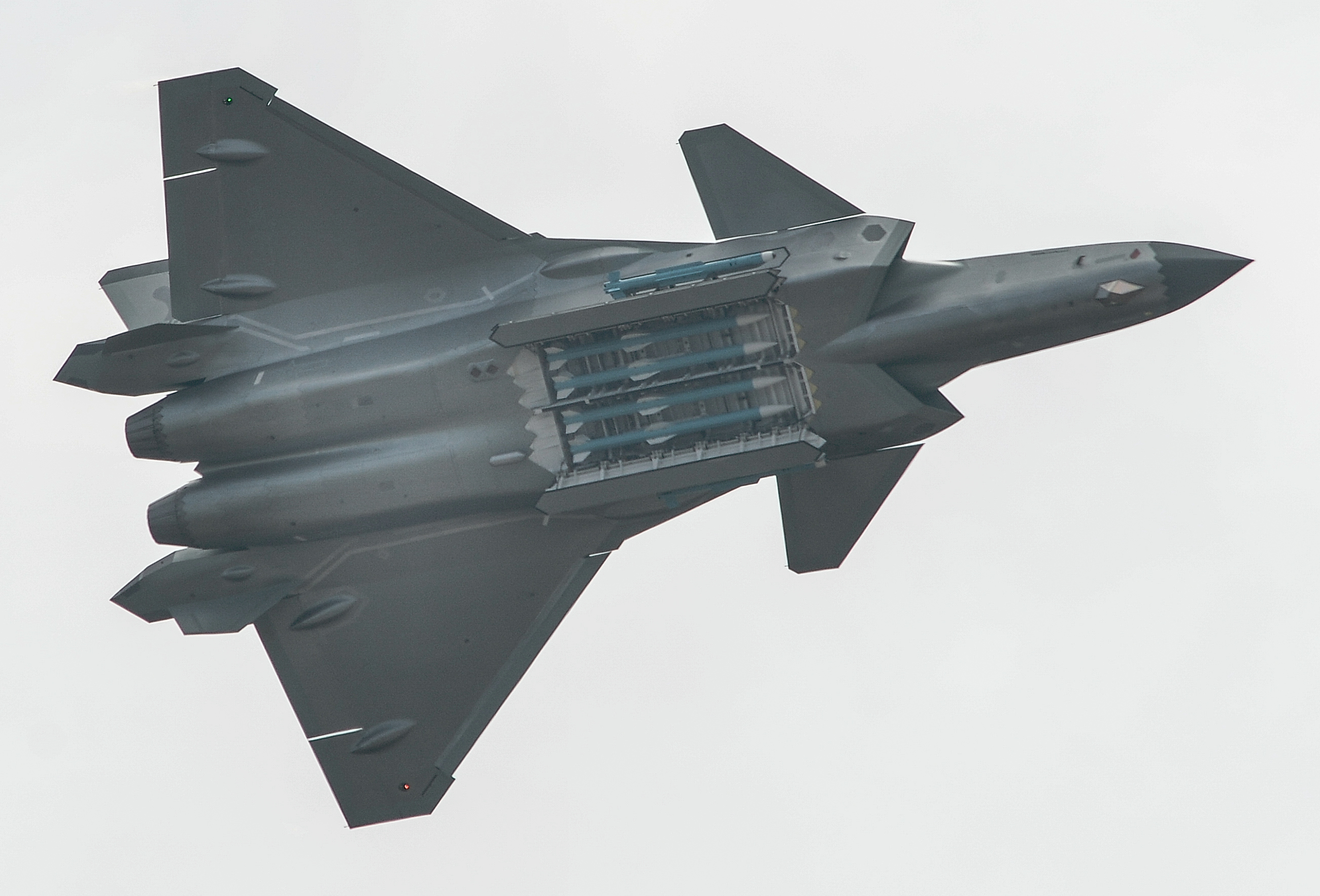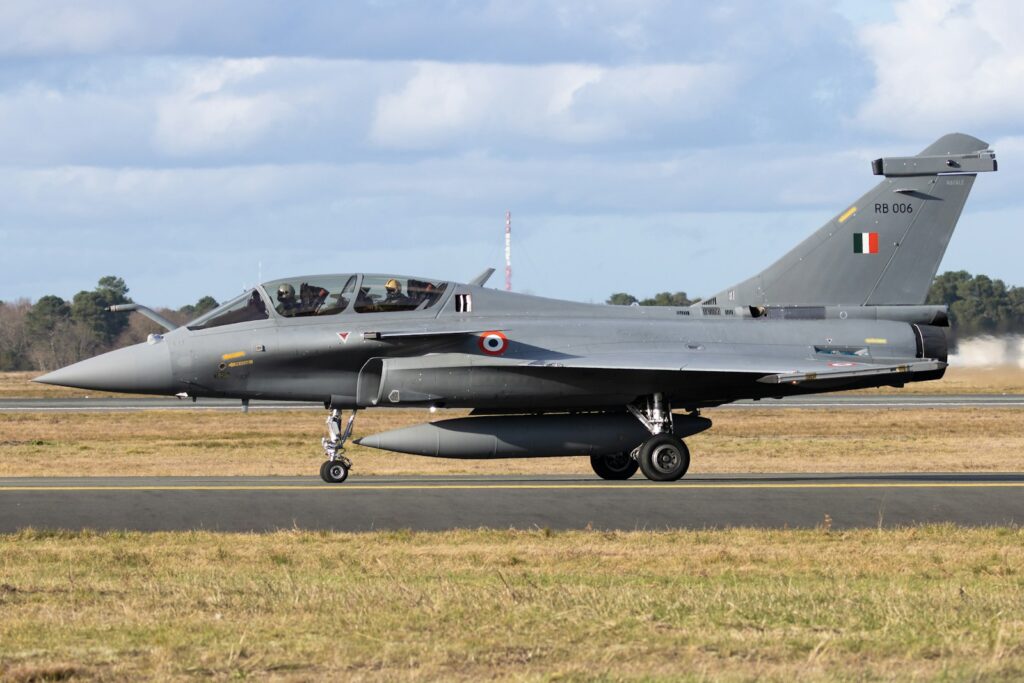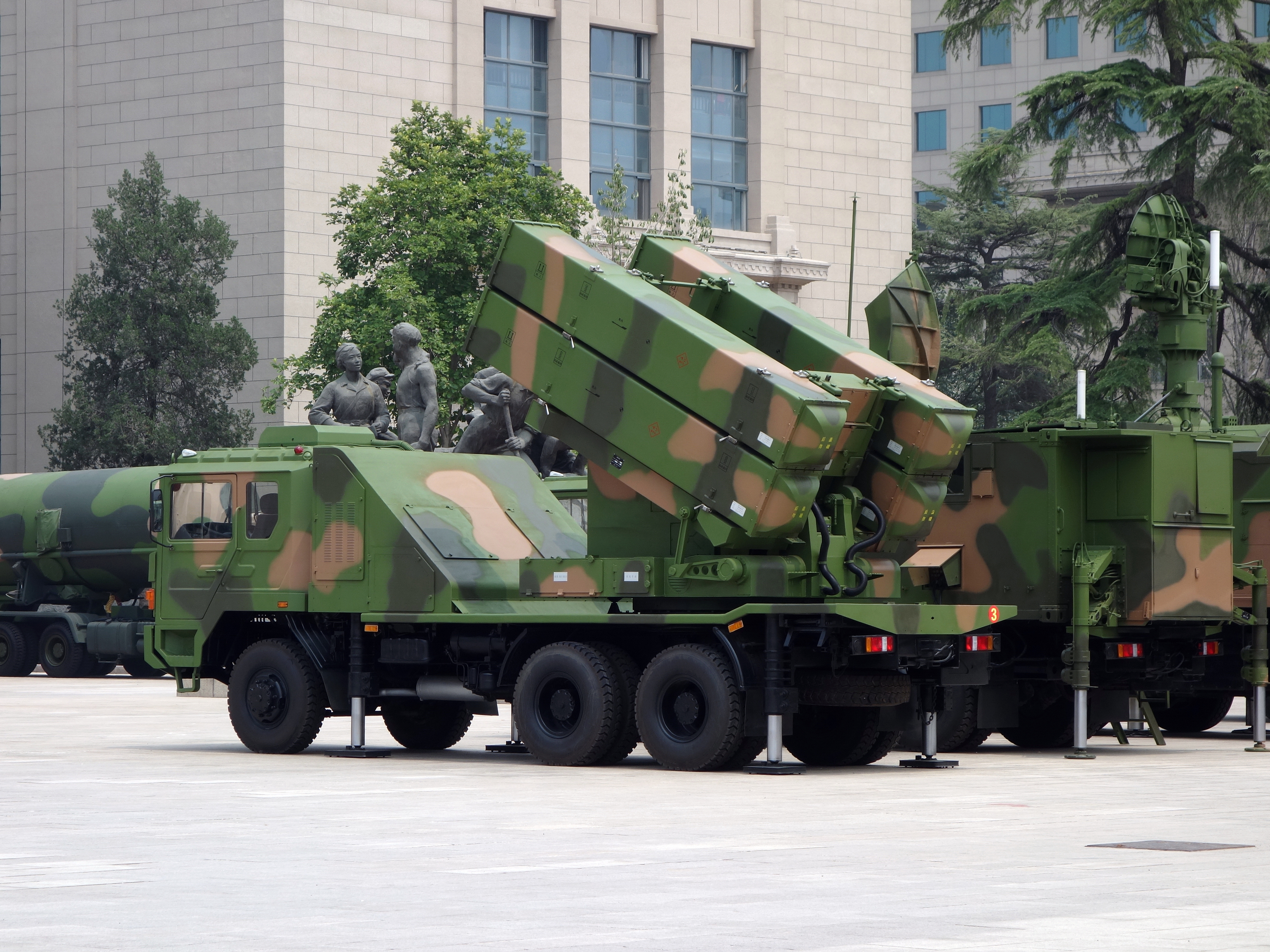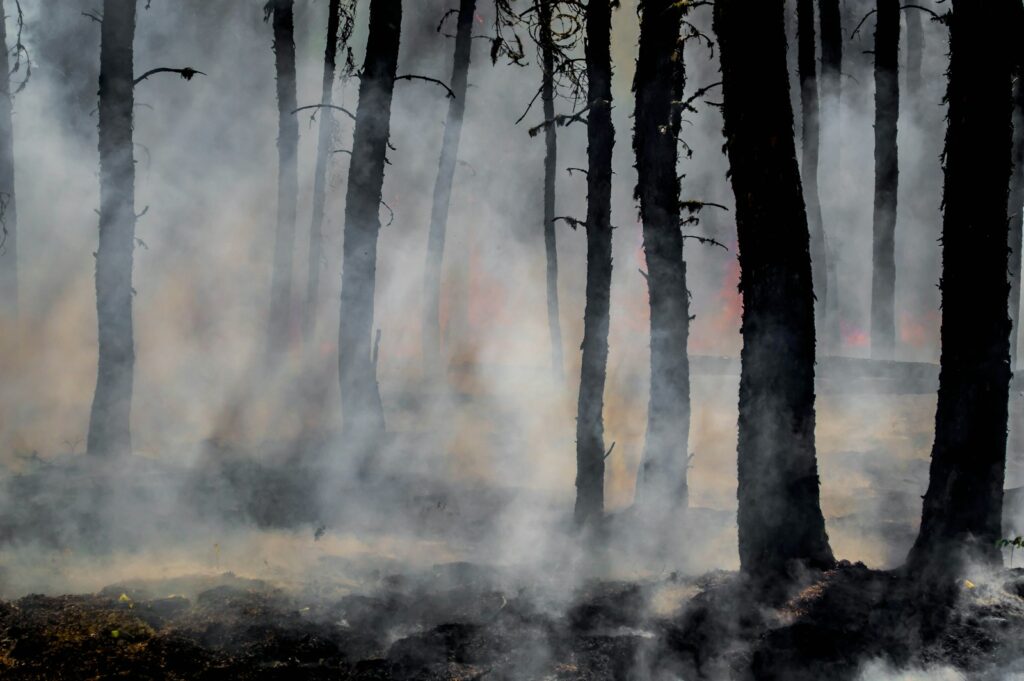
The recent near – war between India and Pakistan in May 2025, although a contained conflict, has inadvertently offered the world a rare insight into the capabilities of some of the most up – to – date military systems in operation. Against a backdrop of conflicting assertions and the inherent chaos of conflict, one tangible result has garnered significant international attention: the retrieval of an intact, undetonated Chinese – made PL – 15E air – to – air missile. This piece of wreckage, discovered on Indian soil, signifies more than just a lost weapon; it is a potential goldmine of intelligence that could shape air combat strategies and intelligence – gathering endeavors across the globe. The incident underscores the rapid tempo of military technological change and highlights the growing significance of comprehending modern systems, especially those developed by emerging powers such as China.
The Four – Day Conflict, as it has become known, broke out on May 7th following a terrorist attack in Indian – administered Kashmir. India initiated punitive strikes, some penetrating deep into Pakistani territory, utilizing systems like the BrahMos and European SCALP – EG cruise missiles. Pakistan responded, and over the subsequent days, a sequence of engagements unfolded involving air, drone, and ballistic missile systems. Both sides proclaimed victory, contributing to a challenging information environment marked by substantial disinformation and data constraints, making a clear understanding of events difficult even after the ceasefire on May 10th.
Amidst the competing accounts, the Pakistan Air Force confirmed the use of the Chinese J – 10C fighter jet. They claimed notable success on the first day, stating that they had shot down multiple Indian jets, including Rafales. While the full scope and causes remain under debate, evidence such as crash sites in India and confirmation from foreign government officials suggest that India likely lost several aircraft early in the conflict. This apparent success has been ascribed to various factors, ranging from pilot pressure and geographical conditions to sophisticated system integration, particularly Pakistan’s reported success in combining Chinese weaponry with its Swedish – made SAAB – 2000 Erieye early warning system.
A key element of Pakistan’s arsenal in this conflict was the PL – 15 long – range air – to – air missile, specifically the export variant, the PL – 15E. This missile, developed by China’s Aviation Industry Corporation, is regarded as a crucial asset in China’s air combat capabilities. It is believed to incorporate advanced features such as a dual – pulse rocket motor and active radar guidance, along with sophisticated seekers and electronic counter – countermeasures. The export version, the PL – 15E, is reported to have a strike range of up to 145 kilometers, shorter than the version employed by China’s People’s Liberation Army.

Pakistan received the PL – 15E, in addition to the J – 10C, beginning in 2022, and the missile can be launched from either the J – 10C or the JF – 17, another Chinese – origin aircraft operated by Pakistan. The retrieval of PL – 15 missile debris in India substantiated its deployment during the conflict. Crucially, during Operation Sindoor, the name India assigned to its part in the conflict, an undetonated PL – 15E missile was recovered intact in Hoshiarpur, Punjab. This provides an unprecedented opportunity for a detailed examination.
The Defence Research and Development Organisation (DRDO) of India has taken custody of this valuable debris. A detailed analysis of the recovered missile holds the potential to yield significant insights into its internal architecture, propulsion systems, guidance technologies, and electronic warfare components. Such an in – depth understanding could be of immense value, directly assisting India’s own missile development programs by providing real – world data on a sophisticated adversary system. The knowledge acquired could inform reverse – engineering endeavors or inspire new design approaches for indigenous weapons.
The significance of this retrieval extends well beyond India’s borders. There is widespread international interest in examining the wreckage, arising from the limited availability of real – world performance data on China’s advanced missile systems. Nations across the globe are eager to evaluate the true capabilities of these weapons, especially as China expands its military technology and influence. The Kashmir conflict marked the first occasion when a military force equipped with modern Chinese weapons, such as the HQ – 9 air defense system, the PL – 15 missile, and the J – 10 fighter aircraft, engaged with Western – origin systems in a near – peer scenario, rendering the performance of these systems of paramount importance to states considering their own defense requirements or concerned about a future confrontation with China.
Military equipment: PL-15
IsMissile: true
Name: PL-15
Caption: China International Aviation & Aerospace Exhibition
Origin: People’s Republic of China
Type: Beyond-visual-range missile,air-to-air missile
Manufacturer: China Airborne Missile Academy (CAMA)
Service: 2016–present
Engine: Pulsed rocket motor,solid-propellant rocket
Mass: 210 kg
Abbr: on (PL-15E)
Length: 399.6 cm
Diameter: 20.3 cm
Speed: Mach 5+
VehicleRange: cvt
Guidance: Active radar homing
LaunchPlatform: Chengdu J-20,Shenyang J-35,Chengdu J-10,Shenyang J-15,Shenyang J-16,Shenyang J-11,CAC/PAC JF-17 Thunder
Categories: Air-to-air missiles of the People’s Republic of China, All Wikipedia articles in need of updating, Articles containing simplified Chinese-language text, Articles with short description, Beyond-visual-range air-to-air missiles, Military equipment introduced in the 2010s, Short description is different from Wikidata, Use dmy dates from November 2022, Weapons of the People’s Republic of China, Wikipedia articles in need of updating from May 2025
Summary: The PL-15 (Chinese: 霹雳-15; pinyin: Pī Lì-Yāo Wǔ; lit. ‘Thunderbolt-15’, NATO reporting name: CH-AA-10 Abaddon) is an active radar-guided long-range beyond-visual-range air-to-air missile developed by the People’s Republic of China, used by the People’s Liberation Army Air Force (PLAAF) and Naval Air Force (PLANAF), and the Pakistan Air Force.
It can reach speeds of up to Mach 5 and has a maximum range of about 300 km, though the PL-15E export version that is sold to Pakistan is reported to have a reduced range of about 145 km.
It is the primary beyond-visual-range air-to-air missile carried by PLA fixed-wing combat aircraft. Its within-visual-range counterpart is the PL-10.
Get more information about: PL-15

Reports indicate that there is keen interest from several nations. France, a key participant in the global defense industry and the supplier of India’s Rafale jets, is reportedly interested in comprehending the missile’s internal architecture and potential radar – evading characteristics. Japan, another significant power in the Indo – Pacific region, is also said to be pursuing access for similar reasons. Furthermore, members of the Five Eyes intelligence alliance, specifically naming the United States and the United Kingdom, are reportedly engaged in discussions with New Delhi concerning possible access to the debris or the analysis resulting from it.
For these nations, studying an intact PL – 15E represents a critical intelligence – gathering opportunity. It enables them to transcend theoretical evaluations or restricted public information and understand the practical application of China’s missile technology. This can directly guide their counter – development endeavors, potentially resulting in the development of effective countermeasures, electronic warfare techniques, or even modifications to their own aircraft tactics and designs to enhance survivability against this particular threat.
India’s stance regarding the potential sharing of the wreckage or its analysis is intricate and strategic. While India has not yet confirmed whether it will permit foreign nations access, experts posit that any decision would be carefully evaluated in light of India’s strategic and diplomatic interests. Sharing could serve to bolster defense ties with key partners such as France, the US, or the UK, potentially leading to reciprocal technology – sharing agreements or enhanced cooperation on defense – related matters.
Military equipment: 2025 India–Pakistan conflict
Categories: 2020s in Jammu and Kashmir, 2025 airstrikes, 2025 in international relations, 2025 military operations, 21st century in Azad Kashmir, Airstrikes conducted by India, Airstrikes conducted by Pakistan, All articles lacking reliable references, All articles with minor POV problems, All pages needing factual verification, Articles lacking reliable references from May 2025, Articles with minor POV problems from May 2025, Articles with short description, Attacks in Asia in 2025, Attacks on military headquarters, Attacks on military installations in 2025, Attacks on military installations in Jammu and Kashmir, CS1: unfit URL, CS1 Arabic-language sources (ar), CS1 Bengali-language sources (bn), CS1 Marathi-language sources (mr), CS1 Swiss High German-language sources (de-ch), CS1 Urdu-language sources (ur), May 2025 in India, May 2025 in Pakistan, Military operations of the Kashmir conflict, Short description is different from Wikidata, Use dmy dates from June 2025, Wikipedia articles needing factual verification from June 2025, Wikipedia articles needing factual verification from May 2025, Wikipedia extended-confirmed-protected pages
Summary: The 2025 India–Pakistan conflict was a brief armed conflict between India and Pakistan that began on 7 May 2025, after India launched missile strikes on Pakistan, in a military campaign codenamed Operation Sindoor. India said that the operation was in response to the Pahalgam terrorist attack in Indian-administered Jammu and Kashmir on 22 April 2025 in which 26 civilians were killed. India accused Pakistan of supporting cross-border terrorism, which Pakistan denied.
On 7 May, India launched Operation Sindoor with missile strikes on terrorism-related infrastructure facilities of Pakistan-based militant groups Jaish-e-Mohammed and Lashkar-e-Taiba in Pakistan and Pakistan-administered Azad Kashmir, and said that no Pakistani military or civilian facilities were targeted. According to Pakistan, the Indian strikes hit civilian areas, including mosques, and resulted in civilian casualties. Following these strikes, there were border skirmishes and drone strikes between the two countries. Pakistan’s army retaliated on 7 May, by launching a blitz of mortar shells on Jammu, particularly Poonch, killing civilians, and damaging homes and religious sites. This conflict marked the first drone battle between the two nuclear-armed nations.
In the early hours of 10 May, India accused Pakistan of launching missile attacks on Indian air bases including the Sirsa air base while Pakistan accused India of launching attacks on several Pakistan air bases, including Nur Khan air base, Rafiqi air base, and Murid air base. As conflict escalated on 10 May, Pakistan launched its Operation Bunyan-un-Marsoos, in which it said it had targeted several Indian military bases.
After the four-day military conflict, both India and Pakistan announced that a ceasefire had been agreed after a hotline communication between their DGMOs (Directors General of Military Operations) on 10 May 2025. U.S. Vice President JD Vance and Secretary of State Marco Rubio held extensive correspondence with both Indian and Pakistani officials during the negotiations. The ceasefire has been holding with resumed commercial flights and normalcy reported from both countries.
Get more information about: 2025 India–Pakistan conflict

Conversely, limiting access may preserve a unique intelligence advantage for India. However, international collaboration in analyzing such a system could potentially generate faster and more comprehensive results than India working independently. The situation underscores India’s emerging role as a key participant in intelligence and defense technology sharing within the Indo – Pacific region, placing it in a position of leverage depending on its chosen course of action. This incident clearly highlights the growing global concerns about China’s military technological advancements and the perceived necessity for preparedness among its geopolitical competitors.
From China’s perspective, the retrieval of an undetonated PL – 15E constitutes a significant setback. Subjecting one of its most advanced air – to – air missile systems to detailed global scrutiny enables rival nations to study its design, comprehend its vulnerabilities, and potentially develop targeted electronic warfare measures to counter its capabilities. This directly undermines the strategic advantage China had hoped to maintain, both through the development of advanced systems like the PL – 15 and through their export to allies such as Pakistan, which was intended to enhance their standing and complicate potential adversary planning.
The information asymmetry regarding Chinese systems has historically posed a challenge for numerous militaries. The recovery of the PL – 15E aids in redressing this imbalance by providing concrete data for analysis. The contrasting narratives surrounding the conflict, including the debate over the performance of Indian Rafales versus Pakistani Chinese – built aircraft and missiles, underscore the difficulty in assessing true military superiority in the modern era, where factors like system integration and pilot readiness play critical roles alongside platform capabilities. Iwan Hermawan, an Indonesian researcher in Strategic and Defence Studies, noted that the J – 10C is technically a third – generation aircraft, inferior to the Rafale, suggesting that Pakistan’s success was not solely attributable to platform superiority but also to system integration skills, such as linking Chinese weapons with a Swedish early warning system.
Military equipment: Five Eyes
Name: Five Eyes
SymbolType: Logo
MapWidth: 270px
MapCaption: Members shown in blue
OrgType: Military alliance
MembershipType: Members
Membership: Australia,Canada,New Zealand,United Kingdom,United States
LanguagesType: Working language
Languages: English language
EstablishedEvent1: Atlantic Charter
EstablishedDate1: Start date and age
EstablishedEvent2: 1943 BRUSA Agreement
EstablishedDate2: Start date and age
Categories: 1941 establishments in England, 20th-century military alliances, 5 (number), All articles containing potentially dated statements, All articles with unsourced statements, Anglosphere, Articles containing potentially dated statements from 2010, Articles with short description, Articles with unsourced statements from July 2024, Australia–Canada relations, Australia–New Zealand relations, Australia–United Kingdom relations, Australia–United States relations, Bletchley Park, CS1 Norwegian-language sources (no), Canada–New Zealand relations, Canada–United Kingdom relations, Canada–United States relations, Espionage, Espionage scandals and incidents, Global surveillance, Intelligence operations, National security, New Zealand–United Kingdom relations, New Zealand–United States relations, Pages using infobox country or infobox former country with the symbol caption or type parameters, Short description is different from Wikidata, United Kingdom–United States relations, Use dmy dates from June 2025, Webarchive template wayback links, Wikipedia articles needing clarification from July 2024
Summary: The Five Eyes (FVEY) is an Anglosphere intelligence alliance comprising Australia, Canada, New Zealand, the United Kingdom, and the United States. These countries are party to the multilateral UKUSA Agreement, a treaty for joint cooperation in signals intelligence. Informally, “Five Eyes” can refer to the group of intelligence agencies of these countries. The term “Five Eyes” originated as shorthand for a “AUS/CAN/NZ/UK/US Eyes Only” (AUSCANNZUKUS) releasability caveat.
The origins of the FVEY can be traced to informal, secret meetings during World War II between British and American code-breakers that took place before the US formally entered the war. The alliance was formalized in the post-war era by the UKUSA Agreement in 1946. As the Cold War deepened, the intelligence sharing arrangement was formalised under the ECHELON surveillance system in the 1960s. This system was developed by the FVEY to monitor the communications of the Soviet Union and Eastern Bloc; it is now used to monitor communications worldwide. The FVEY expanded its surveillance capabilities during the course of the “war on terror”, with much emphasis placed on monitoring the Internet. The alliance has grown into a robust global surveillance mechanism, adapting to new domains such as international terrorism, cyberattacks, and contemporary regional conflicts.
The alliance’s activities, often shrouded in secrecy, have occasionally come under scrutiny for their implications on privacy and civil liberties, sparking debates and legal challenges. In the late 1990s, the existence of ECHELON was disclosed to the public, triggering a debate in the European Parliament and, to a lesser extent, the United States Congress and British Parliament. Former NSA contractor Edward Snowden described the Five Eyes as a “supra-national intelligence organisation that does not answer to the known laws of its own countries. Disclosures in the 2010s revealed FVEY was spying on one another’s citizens and sharing the collected information with each other, although the FVEY nations maintain this was done legally.
Five Eyes is among the most comprehensive espionage alliances. Since processed intelligence is gathered from multiple sources, the information shared is not restricted to signals intelligence (SIGINT) and often involves military intelligence (MILINT), human intelligence (HUMINT), and geospatial intelligence (GEOINT). Five Eyes remains a key element in the intelligence and security landscape of each member country, providing them a strategic advantage in understanding and responding to global events.
Get more information about: Five Eyes
Read more about: Viral Wake-Up Call: Fiverr CEO Says AI Is Coming For Your Job… And Gives You Months to Adapt

The debate over the Rafale’s performance itself highlights these complexities. While some observers point to potential deficiencies in the French jet, others, including, as reportedly stated, French representatives, attribute issues to factors such as maintenance and pilot readiness within the Indian Air Force, citing reports of pilot shortages and training – aircraft issues. India’s refusal to grant French auditors full access to its Rafale fleet adds another layer to this debate, with speculation that India fears France will shift the blame for losses onto the IAF, or that Dassault is reluctant to share the source code needed for maintenance and integration, potentially revealing perceived overcharging or under – delivery.
Adding to this dynamic, Chinese state media, as reportedly stated, capitalized on the news of India’s inability to access the Rafale source code alongside the PL – 15E recovery. A “wolf warrior” diplomat on social media, as reportedly stated, questioned how India, spending “$288 million per Rafale” without access to the source code, could claim it could “extract the software” from missile wreckage, highlighting the perceived gap between Indian military propaganda and the realities of its operational capabilities and procurement challenges. While abrasive, the comment points to the broader information conflict that accompanies military engagements.
Ultimately, the Four – Day Conflict and the subsequent recovery of the PL – 15E missile offer valuable lessons beyond the immediate tactical outcomes. They illustrate that modern warfare involves complex interactions among platforms, weapons, sensors, pilot training, maintenance, system integration, and the pervasive influence of information operations and strategic signaling. The conflict, like others in the 21st century involving high – tech platforms against near – peer adversaries, serves as a case study that generates insights for thinking through contemporary warfare.
Military equipment: Dassault Rafale
Name: Rafale
Caption: French Air Force
Categories: 1980s French fighter aircraft, 4.5-generation jet fighters, Aircraft first flown in 1986, All articles containing potentially dated statements, All articles with unsourced statements, Articles containing potentially dated statements from 2007, Articles containing potentially dated statements from 2010, Articles containing potentially dated statements from 2012, Articles containing potentially dated statements from August 2024, Articles containing potentially dated statements from December 2011, Articles containing potentially dated statements from December 2018, Articles with short description, Articles with unsourced statements from July 2024, Articles with unsourced statements from May 2025, CS1: long volume value, CS1: unfit URL, CS1 Brazilian Portuguese-language sources (pt-br), CS1 Croatian-language sources (hr), CS1 French-language sources (fr), CS1 German-language sources (de), CS1 Greek-language sources (el), CS1 Indonesian-language sources (id), CS1 Portuguese-language sources (pt), CS1 Spanish-language sources (es), CS1 Swedish-language sources (sv), CS1 maint: multiple names: authors list, Canard aircraft, Carrier-based aircraft, Commons link from Wikidata, Dassault aircraft, Delta-wing aircraft, Good articles, Pages with French IPA, Relaxed-stability aircraft, Short description is different from Wikidata, Short description matches Wikidata, Twinjets, Use dmy dates from April 2024, Webarchive template wayback links, Wikipedia articles needing clarification from June 2021
Summary: The Dassault Rafale (French pronunciation: [ʁafal], literally meaning “gust of wind”, or “burst of fire” in a more military sense) is a French twin-engine, canard delta wing, multirole fighter aircraft designed and built by Dassault Aviation. Equipped with a wide range of weapons, the Rafale is intended to perform air supremacy, interdiction, aerial reconnaissance, ground support, in-depth strike, anti-ship strike and nuclear deterrence missions. It is referred to as an “omnirole” aircraft by Dassault.
In the late 1970s, the French Air Force and French Navy sought to replace and consolidate their existing fleets of aircraft. In order to reduce development costs and boost prospective sales, France entered into an arrangement with the UK, Germany, Italy and Spain to produce an agile multi-purpose “Future European Fighter Aircraft” (which would become the Eurofighter Typhoon). Subsequent disagreements over workshare and differing requirements led France to pursue its own development programme. Dassault built a technology demonstrator that first flew in July 1986 as part of an eight-year flight-test programme, paving the way for approval of the project.
The Rafale is distinct from other European fighters of its era in that it is almost entirely built by one country, France, involving most of France’s major defence contractors, such as Dassault, Thales and Safran. Many of the aircraft’s avionics and features, such as direct voice input, the RBE2 AA active electronically scanned array (AESA) radar and the optronique secteur frontal infra-red search and track (IRST) sensor, were domestically developed and produced for the Rafale programme. Originally scheduled to enter service in 1996, the Rafale suffered significant delays due to post-Cold War budget cuts and changes in priorities. There are three main variants: Rafale C single-seat land-based version, Rafale B twin-seat land-based version, and Rafale M single-seat carrier-based version.
Introduced in 2001, the Rafale is being produced for both the French Air Force and for carrier-based operations in the French Navy. It has been marketed for export to several countries, and was selected for purchase by the Egyptian Air Force, the Indian Air Force, the Indian Navy, the Qatar Air Force, the Hellenic Air Force, the Croatian Air Force, the Indonesian Air Force, the United Arab Emirates Air Force and the Serbian Air Force. The Rafale is considered one of the most advanced and capable warplanes in the world, and among the most successful internationally. It has been used in combat over Afghanistan, Libya, Mali, Iraq, Syria, and by India near its border with Pakistan.
Get more information about: Dassault Rafale

Military equipment: PL-15
IsMissile: true
Name: PL-15
Caption: China International Aviation & Aerospace Exhibition
Origin: People’s Republic of China
Type: Beyond-visual-range missile,air-to-air missile
Manufacturer: China Airborne Missile Academy (CAMA)
Service: 2016–present
Engine: Pulsed rocket motor,solid-propellant rocket
Mass: 210 kg
Abbr: on (PL-15E)
Length: 399.6 cm
Diameter: 20.3 cm
Speed: Mach 5+
VehicleRange: cvt
Guidance: Active radar homing
LaunchPlatform: Chengdu J-20,Shenyang J-35,Chengdu J-10,Shenyang J-15,Shenyang J-16,Shenyang J-11,CAC/PAC JF-17 Thunder
Categories: Air-to-air missiles of the People’s Republic of China, All Wikipedia articles in need of updating, Articles containing simplified Chinese-language text, Articles with short description, Beyond-visual-range air-to-air missiles, Military equipment introduced in the 2010s, Short description is different from Wikidata, Use dmy dates from November 2022, Weapons of the People’s Republic of China, Wikipedia articles in need of updating from May 2025
Summary: The PL-15 (Chinese: 霹雳-15; pinyin: Pī Lì-Yāo Wǔ; lit. ‘Thunderbolt-15’, NATO reporting name: CH-AA-10 Abaddon) is an active radar-guided long-range beyond-visual-range air-to-air missile developed by the People’s Republic of China, used by the People’s Liberation Army Air Force (PLAAF) and Naval Air Force (PLANAF), and the Pakistan Air Force.
It can reach speeds of up to Mach 5 and has a maximum range of about 300 km, though the PL-15E export version that is sold to Pakistan is reported to have a reduced range of about 145 km.
It is the primary beyond-visual-range air-to-air missile carried by PLA fixed-wing combat aircraft. Its within-visual-range counterpart is the PL-10.
Get more information about: PL-15
Read more about: Eye-Opening Truths: Married Men Share The Toughest Parts Of Marriage Nobody Talks About
The intact PL – 15E wreckage stands as a tangible artifact emerging from this complex interaction, a Rosetta Stone for interpreting China’s evolving air – to – air missile capabilities. Its journey, starting from a Pakistani fighter, then to an Indian field, and now into the hands of global intelligence analysts, marks a pivotal moment. The insights derived from its analysis will undoubtedly spread through defense ministries and strategic think tanks worldwide, influencing everything from procurement decisions to operational doctrine and electronic warfare development. It serves as a stark reminder that in the intricate interplay of modern aerial power, the debris left behind can sometimes disclose more than the maneuvers themselves, offering invaluable lessons in the ongoing pursuit of technological advantage and strategic preparedness in a rapidly changing global landscape.



